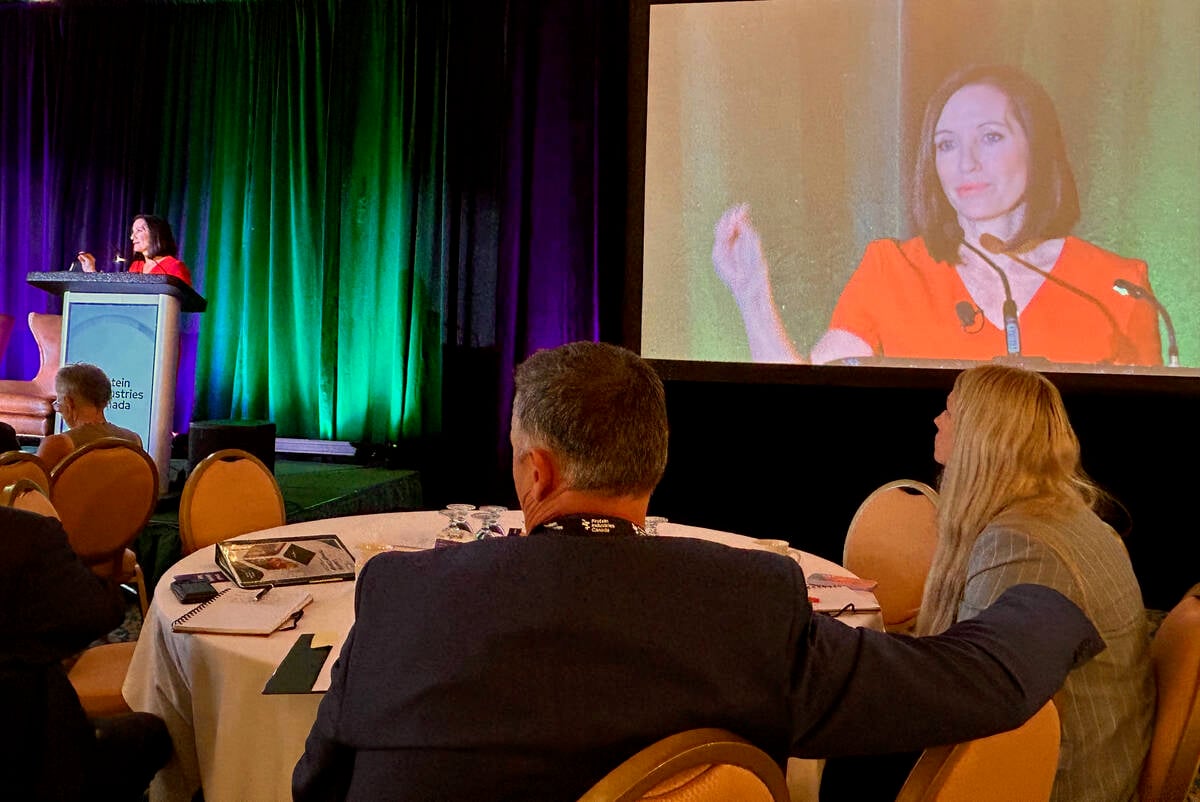Cost of production study | Producers can make more money if they control costs, even when times are tough
RED DEER — Record pork prices have provided welcome relief for an industry plundered by severe losses since 2008.
Losses averaged $20 per pig for the last several years, and producers abandoned the business in droves. The 370 operations remaining in Alberta need successive years of prosperity to rebuild lost equity.
“We may have recovered about half of the losses that were incurred,” Alberta Pork chair Frank Novak, said at the organization’s annual meeting held in Calgary Nov. 6.
“We all know people who got lost along the way before we finally had the chance to reap the benefits after seven years of pain.”
Read Also

Canada told trade crisis solutions in its hands
Canadians and Canadian exporters need to accept that the old rules of trade are over, and open access to the U.S. market may also be over, says the chief financial correspondent for CTV News.
The worst year was 2012, when losses were around $60 per pig.
Alberta Pork, with financial help from the Alberta Livestock and Meat Agency, embarked on a three-year study to look at the cost of production and profitability on 30 operations.
The benchmarking study found tremendous variation in profits, losses and costs from 2011-13, said Murray Roseke of Alberta Pork.
“Prior to participation in the pilot project, producers were not aware of their above average costs,” he said at the Red Deer swine technology workshop Nov. 5.
Benchmarking studies are common in the United States, but a hard look at what it costs to produce a kilogram of pork was unique in this country.
The study does not identify individual operations, although the information is available to those who want to compare themselves to the data collected. The reports included the number of pigs weaned per sow per year, weaning weights and days to market. It also worked out the cost of producing one kilogram of pork.
The study found producers who did some things extremely well still turned a profit, albeit a small one, even during cycles of intense losses.
The biggest loss over the three-year period under study was $57.60 per hog and the highest profit was $5.97 per pig.
Higher feed costs killed profits, but a few producers managed to have a positive balance sheet in 2011 and 2012. Their profits ranged from 39 cents per pig to $5.88 per pig.
The key was keeping down feed costs.
Two producers who made money said they weaned pigs sooner, controlled feed waste, analyzed feed rations, relied on locally produced protein sources and used a grain broker.
A grain broker gets the feed delivered on time, so less inventory is carried and the quality is probably better.
Feed conversion also made a difference.
In 2012, farmers with the best feed conversion had lower stocking densities and sorted pigs by weight in the finishing phase.
They also paid attention to shipping weights.
The feed conversion gets worse as the animals get bigger, which meant keeping heavier pigs cost money to feed and ultimately did not meet the carcass index.
In 2013, a group of producers were asked to submit their weekly settlement statements from processors from April 1 to May 31.
Profitability had improved by this time, but some producers made much more money than others. Some failed to make the carcass grid, and others made more money because they worked with a packer that paid more.
For example, a farmer who ships 10,000 pigs and earns $20 less per pig than a colleague loses $200,000.
“It has nothing to do with the pig because we are shipping the pigs at the same weight,” Roseke said.
“It’s just the guys who are concentrating on hitting the packer grid, weighing those pigs.”
Other produces used forward contracting, which made a huge difference.
The high cost of utilities also affected profitability. Alberta Pork is arranging to have 50 to 70 energy audits done on farms at no cost to producers to see where improvements can be made.
The audits will monitor energy use and make suggestions to the farm on what could be done differently. The return on investment will be included.
For example, installing LED lights in the barns will take a year to pay back. Solar panels for electricity could take nine years to pay back.
The study also had some good news.
When compared to a similar American benchmark study, it was found Alberta can finish pigs 13 days faster than the U.S. and save $10 per pig by doing so.
“Why do we send hundreds of thousands of pigs to the U.S. to be finished?” asked Roseke.
Alberta Pork is working with Alberta Agriculture to examine competitiveness between the two regions and assess why thousands of pigs are still exported south for finishing.















